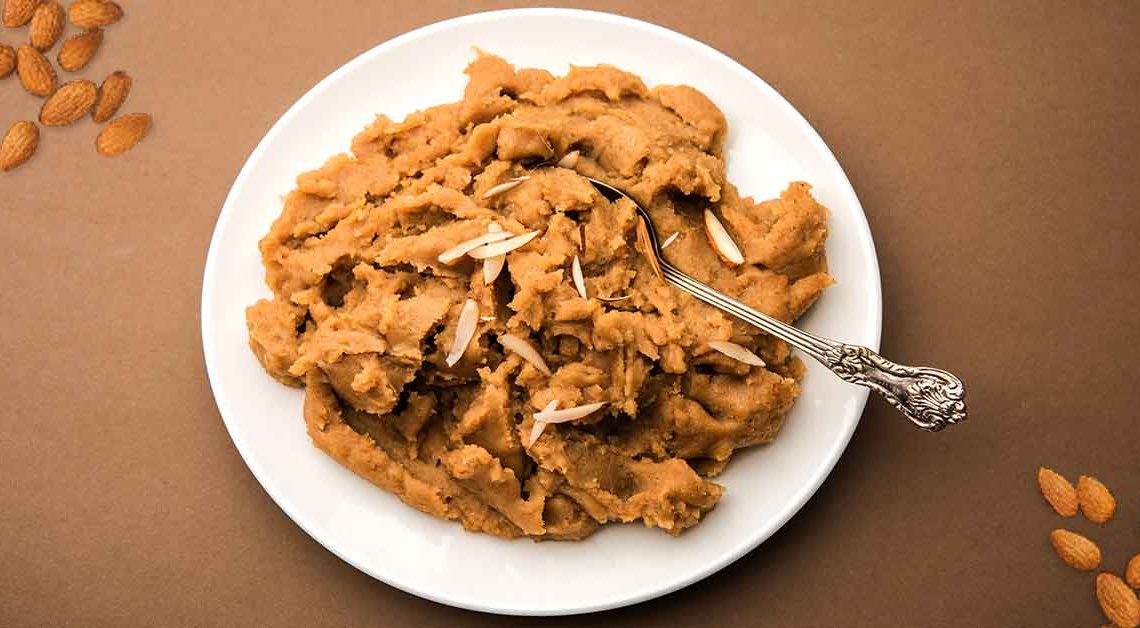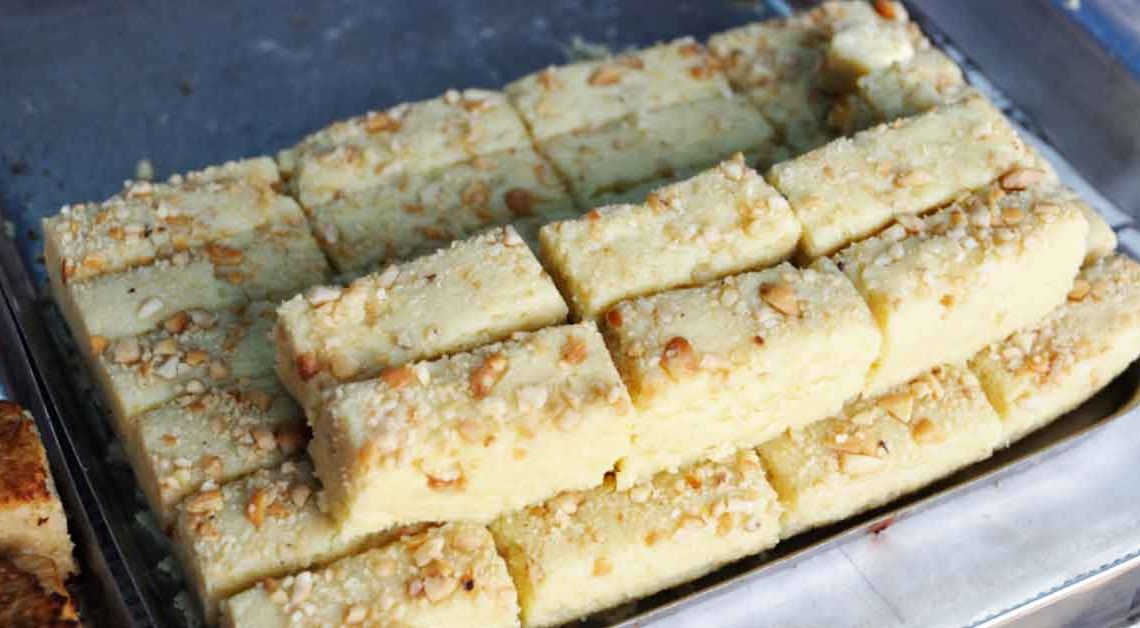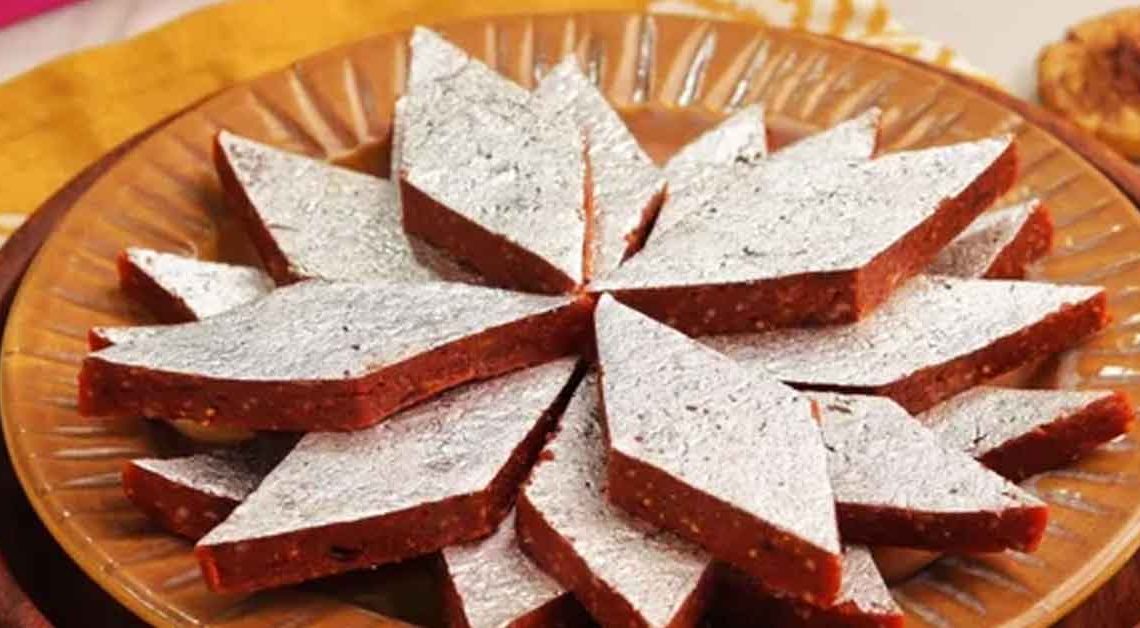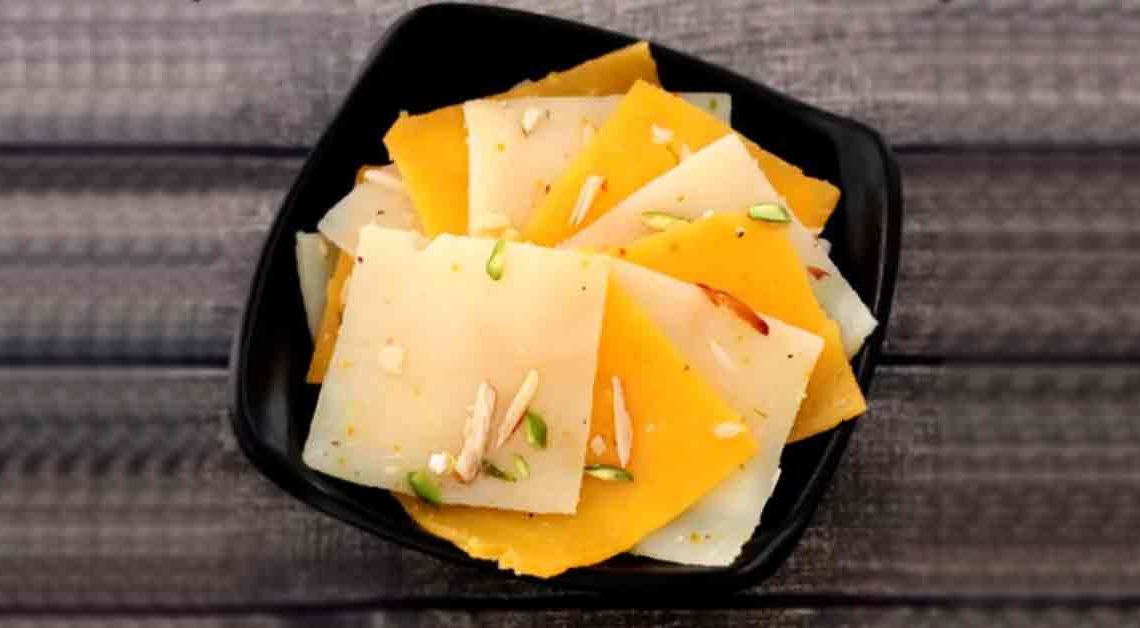Golden Temptations: Badam Halwa

Welcome, fellow food enthusiasts, to our journey through the world of Mithainama! Today, we set forth on an expedition to uncover the secrets of a mesmerizing Indian dessert that will make your taste buds dance with joy. Brace yourselves as we delve into the alluring realm of Badam Halwa, a luscious treat that has captivated generations with its rich flavors and velvety texture.
In the vast tapestry of Indian cuisine, where it stands out as a shining star. Crafted with love, this aromatic dessert hails from the royal kitchens of India, where it was relished by kings and queens. Also known as Almond Halwa, it is a symphony of finely ground almonds, ghee (clarified butter), sugar, and a dash of fragrant saffron, culminating in a luxurious sweet that evokes nostalgia and pure bliss.
Join us as we embark on a culinary adventure through the universe of Badam Halwa.
Origin of Badam Halwa
The origin can be traced back to the rich culinary traditions of the Indian subcontinent. This decadent dessert holds a significant place in Indian cuisine, particularly in regions like North India and South India.
The roots of halwa can be found in the royal kitchens of ancient India, where it was considered a delicacy fit for kings and queens. The dish was crafted with utmost care and precision, using high-quality almonds, pure ghee (clarified butter), and aromatic spices.
The process of making involves soaking almonds overnight, removing their skins, and grinding them into a fine paste. This paste is then cooked with ghee and sugar, infused with flavors of cardamom and saffron, until it transforms into a rich, creamy halwa. The final touch often includes garnishing with slivered almonds and pistachios, adding a delightful crunch to the velvety texture.
With its origins steeped in tradition and its flavors continuing to captivate taste buds, and stands as a testament to the culinary heritage of India and a delightful treat that has stood the test of time.
History of Badam Halwa
The history of Badam Halwa dates back centuries, evolving through time and cultural influences. This delightful dessert has a rich heritage rooted in the Indian subcontinent.
It finds its history in the Mughal era, during the reign of the Mughal emperors in India. The Mughals, known for their opulent lifestyles and love for fine cuisine, played a significant role in shaping the culinary landscape of the region. It is believed that halwa was introduced and popularized during this period.
Initially, it was a delicacy reserved for the royal courts, enjoyed by the kings and nobility. The dish was prepared using the finest almonds, pure ghee, and an array of aromatic spices. Skilled chefs would meticulously grind the almonds to create a smooth paste and then cook it with ghee and sugar to achieve a rich, creamy consistency.
Cultural Significance
Badam Halwa holds a significant cultural significance in the Indian subcontinent, being more than just a delectable dessert. It has become intertwined with various aspects of Indian culture, traditions, and celebrations.
Festivals and Celebrations: It is often associated with joyous occasions and festive celebrations. It is a common sweet served during festivals like Diwali, Eid, and weddings. The rich and indulgent nature makes it a symbol of abundance, prosperity, and good fortune.
Religious Offerings: In many Indian households, it is offered as a sacred offering or prasad during religious ceremonies and prayers. It is believed to be a favored sweet by the deities and is shared among devotees as a blessed treat.
Traditional Cuisine: It holds a special place in the diverse Indian cuisine. It represents the culinary heritage and traditional flavors passed down through generations. It is often prepared with love and care, using age-old techniques and recipes, preserving cultural culinary practices.
Where is Badam Halwa Famous?
Badam Halwa is famous and widely enjoyed in various regions across the Indian subcontinent. Here are some specific areas where it has gained significant popularity:
North India: It holds a special place in the culinary traditions of North India. It is particularly famous in cities like Delhi, Lucknow, Jaipur, and Amritsar, where it is relished as a luxurious dessert during festivals, weddings, and special occasions.
South India: It is also highly favored in South India, where it is known as Badam Kesari. It is popular in states like Tamil Nadu, Karnataka, Andhra Pradesh, and Kerala. South Indian sweet shops often feature one of their signature delicacies.
Maharashtra: In Maharashtra, it is relished as a part of festive celebrations and weddings. It is often prepared with a touch of local flavors and enjoyed as a sweet treat during traditional Maharashtrian festivals like Ganesh Chaturthi and Gudi Padwa.
Interesting Facts and Trivia
Certainly! Here are some interesting facts and trivia related to Badam Halwa:
- It has its origins in the royal kitchens of India, where it was enjoyed by kings and queens. It was considered a luxurious and prestigious dessert reserved for royalty.
- It derives its name from the Hindi word “badam,” which means almonds. Almonds are the star ingredient of this dessert, providing a rich and nutty flavor.
- Almonds, the main component of halwa, are packed with essential nutrients. They are a rich source of healthy fats, proteins, fiber, and various vitamins and minerals, making halwa not only delicious but also nutritious.
- The process of making it is time-consuming and requires patience and skill. Almonds are soaked, peeled, and ground into a fine paste, which is then cooked with ghee and sugar to achieve the desired consistency and flavors.
- It is often infused with aromatic ingredients like cardamom and saffron. These spices enhance the fragrance and taste of the dessert, adding a delightful touch to the overall experience.
Did You Know?
Did you know? Badam Halwa not only tantalizes your taste buds but also offers numerous health benefits!
- Badam Halwa is made primarily with almonds, which are rich in healthy fats, proteins, and dietary fiber. Consuming Badam Halwa provides a wholesome dose of essential nutrients that contribute to overall well-being.
- Almonds are known for their brain-boosting properties. They contain nutrients like vitamin E, omega-3 fatty acids, and antioxidants, which support cognitive function and may help improve memory and concentration.
- Almonds are heart-friendly nuts. They are packed with monounsaturated fats, which can help reduce bad cholesterol levels and promote cardiovascular health. Indulging in Badam Halwa in moderation can be a delightful way to care for your heart.
- It provides a quick and sustainable energy boost. Almonds are a rich source of healthy fats, proteins, and carbohydrates, which provide a steady release of energy and help keep you fueled throughout the day.
- Almonds in Badam Halwa can enhance the absorption of nutrients from other foods. The healthy fats present in almonds aid in the absorption of fat-soluble vitamins like A, D, E, and K, ensuring maximum utilization of nutrients by the body.







